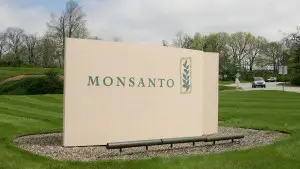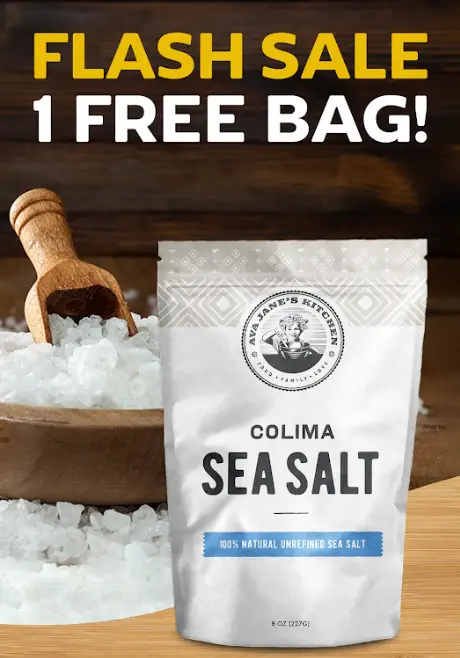In early 2013 a verdict was reached in the OSGATA (Organic Seed Growers and Traders Association) v. Monsanto lawsuit by the Court of Appeals for the Federal Circuit in Washington, D.C. over whether or not a case would be allowed to proceed against the GMO seed and chemical giant.
The organic farmers association was seeking protection from patent infringement in the case of accidental drift from GMO pollen for its members.
The ruling ended in disappointment for the organic farmers, as a three-judge panel ruled that the lawsuit would not be allowed to continue due to the explanation that “Monsanto has made binding assurances that it will not ‘take legal action against growers whose crops might inadvertently contain traces of Monsanto biotech genes (because, for example, some transgenic seed or pollen blew onto the grower’s land).”
But there’s at least one major problem with that “assurance” that stands out the most to OSGATA head Jim Gerritsen, as he explained in a wide-ranging interview last fall: The definition of “trace amounts” is completely vague and open to interpretation by Monsanto, once again giving them the upper hand in potential future lawsuits or other legal issues.
The infamous “Monsanto website promise” is as follows:
“It has never been, nor will it be Monsanto policy to exercise its patent rights where trace amounts of our patented seed or traits are present in farmer’s fields as a result of inadvertent means.”
Gerritsen has already known several members of OSGATA who have been forced to completely give up on growing crops like organic corn, soybeans and canola because of the almost certainty that they will be contaminated by more than trace amounts, thereby causing economic harm and infringing on the freedom to grow the crops they choose on their own land. The latter allowance by the courts flies in the face of centuries of modern law.
In February 2012, Judge Naomi Buchwald acknowledged the likelihood of contamination by Monsanto GMOs but then told OSGATA plaintiffs they essentially had nothing to fear, simply because of the website “promise.”
When asked for a binding legal covenant that would guarantee that they wouldn’t sue, however, Monsanto refused according to Gerritsen.
“That tells us that they want to preserve their option of pursuing us,” he said.
Gerritsen continues in the interview from fall 2013:
“This was astounding to us; we all read the judge’s ruling…it knocked us off our chairs because the judge said we should find comfort in the statement that Monsanto has posted on their website. Now this statement you can find on the Monsanto website under their “commitment” to farmers, this commitment which is anonymous, it has no meaning. I mean, if somebody doesn’t sign their name to it, even if we were to believe Monsanto, and the essence of the commitment is they will not pursue a farmer for patent infringement should trace amounts of their patented technology end up on our farms through inadvertent means. Two keys: “trace amount and inadvertent means.”
Just using a little bit of logic, if you have one unit more than a trace amount, they will pursue us. We have tried unsuccessfully to get them to tell us, what do these terms mean, trace amount and inadvertent means? They refuse to say so, they like to keep it vague. You can deduce that if a trace amount is not sufficient to pursue patent infringement litigation there is some unit above the trace amount when they will.
We have been unsuccessful using court briefs to explain inadvertent means and they refuse to do so, but we believe what they mean is that organic farmers need to provide a sufficient buffer on their farms to prevent cross contamination, and that should we become contaminated that would be indication that we have not provided sufficient buffer therefore it would no longer be inadvertent but intentional possession. We would thereby be liable for patent infringement; but this is a point I want to make, we consider that statement, their commitment vague and we don’t believe them. But even if we did believe them today there’s nothing preventing Monsanto from changing their statement on their website tomorrow because it has no legal binding. Their refusal to provide a written legal binding covenant tells us they have ulterior motives.
Perhaps even more infuriating and alarming to the OSGATA organization and the farmers is the hypocrisy demonstrated by Monsanto in a series of events that began in July 2011, when Monsanto filed a motion to dismiss.
As Gerritsen said in the fall interview:
In that they made reference to the website commitment…Within one week of filing that motion to dismiss, in an entirely separate case (Monsanto Company et al. v. Boggs Farm Center, Inc., et al, in July of 2011) in which Monsanto was pursuing a family farmer in Eastern District of Missouri, that would be in St. Louis federal court, their home turf, they were pursuing a farmer for patent infringement.
This farmer and his attorneys invoked this farmer commitment on Monsanto’s website and they argued, “You shouldn’t be pursuing us, look here on your website!” You have a commitment to farmers saying you’re not going to sue me when we have trace amounts for inadvertent means. Monsanto’s own lawyers characterized the commitment on Monsanto’s website as “vague and without meaning.”

Monsanto’s own lawyers characterized their website promise not to sue farmers as “vague and without meaning.”
On August 11, we filed our rebuttal to Monsanto’s motion to dismiss and our lawyers cited in our brief this was like trying to play it both ways. They’re trying to tell us we should be assured by it yet in another case in federal court record, and there are transcripts available, we cited in our brief we exposed this two-facedness by Monsanto. But then a judge rules five months later dismissing the case.
In our ruling he says the farmers should find comfort in this “commitment,” why would a judge make reference to a commitment that has been completely exposed as fallacious? We were just mystified.
While some are viewing the recent court decision to “bind Monsanto to its website promise” as a partial victory, their track record in living up to it is suspect at best.
“Before this suit, the Organic Seed plaintiffs were forced to take expensive precautions and avoid full use of their land in order to not be falsely accused of patent infringement by Monsanto,” said OSGATA’s attorney for the case, Dan Ravicher, of the Public Patent Foundation (PUBPAT), Ravicher.
“The decision (earlier last week) means that the farmers did have the right to bring the suit to protect themselves, but now that Monsanto has bound itself to not suing the plaintiffs, the Court of Appeals believes the suit should not move forward.”
Even though some farmers will likely feel a little safer from lawsuit now, mainly because of the public will likely be more aware of any future suits and Monsanto will likely seek to avoid further bad publicity if possible, the worry about cross contamination will almost certainly remain.
Gerritsen said that although he was disappointed with the court ruling, not all is lost.
“”The U.S. Court of Appeals ruling is disappointing because it prevents the family farmers from having our day in Court in order to argue the merits of our case challenging Monsanto’s transgenic seed patents,” Gerritsen said.
“Our lawyers have prepared four strong, self-standing legal arguments based on patent law and we are prepared to prove that the U.S. Patent Office erred and that Monsanto’s transgenic seed patents are invalid. The silver lining in the ruling is that the Court has ordered Monsanto to not sue farmers for patent infringement when level of contamination is 1% or less.”
Unfortunately, with contamination remaining a fact of life for organic family farmers across the country, avoiding that level of contamination is proving to be a costly and difficult task.
Thanks for reading! P.S., You can stay updated by liking us on Facebook here.
This article was first written in 2015 and the title was updated in 2018.
Thanks for installing the Bottom of every post plugin by Corey Salzano. Contact me if you need custom WordPress plugins or website design.













